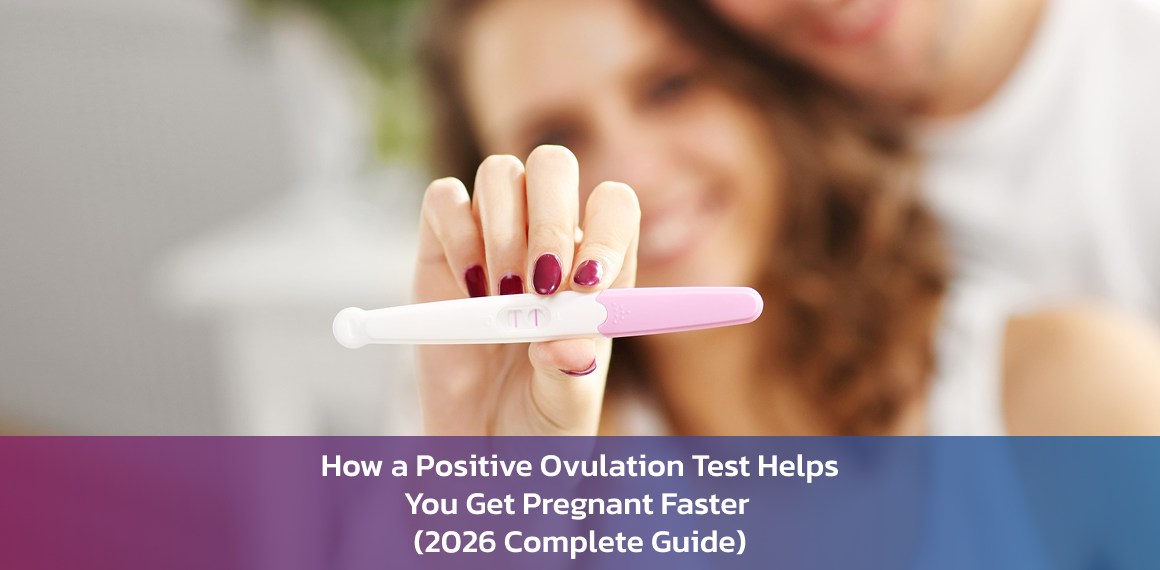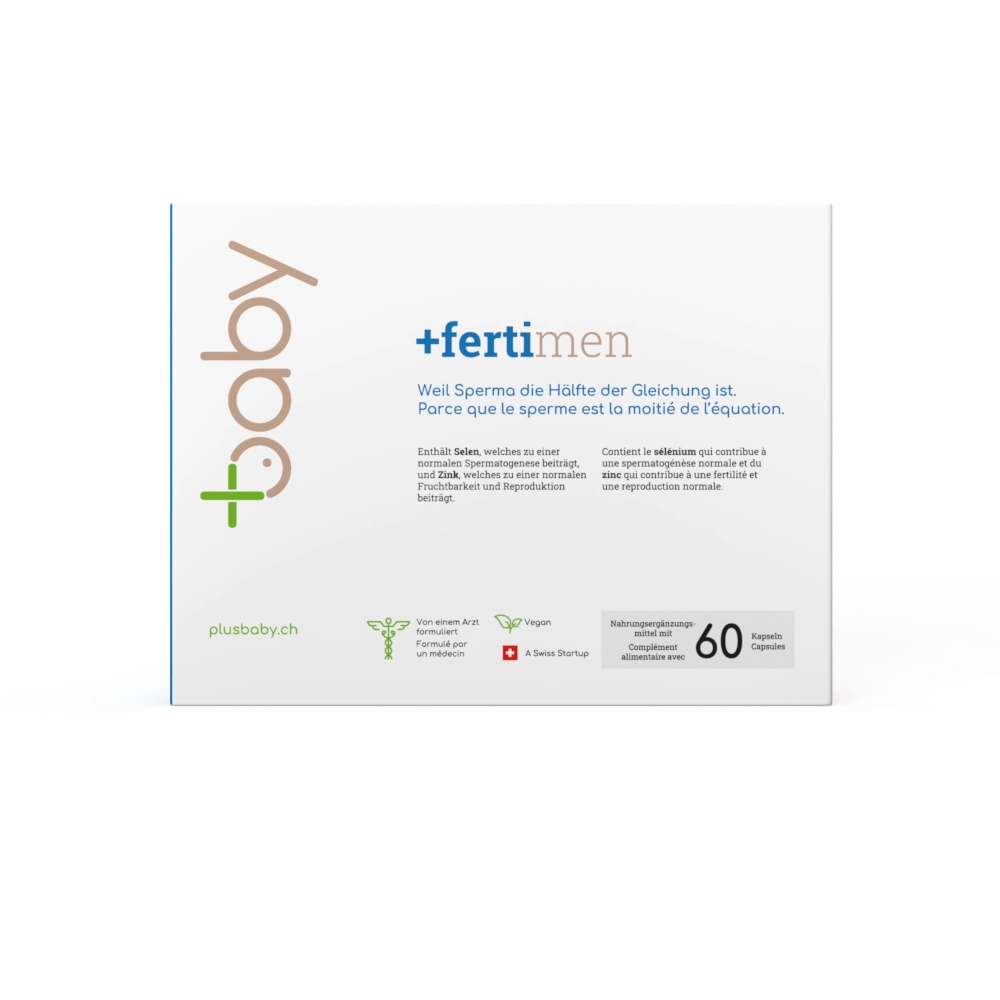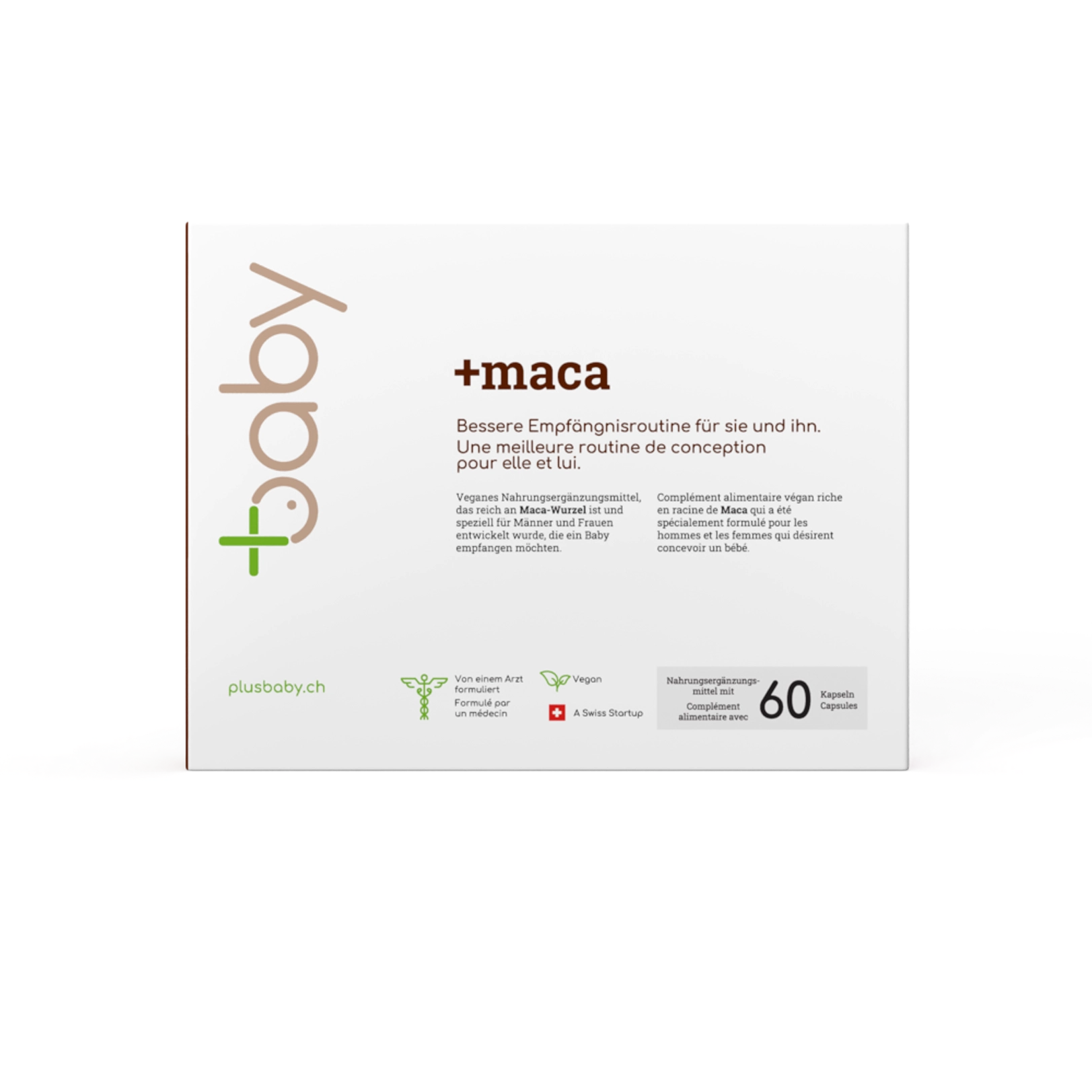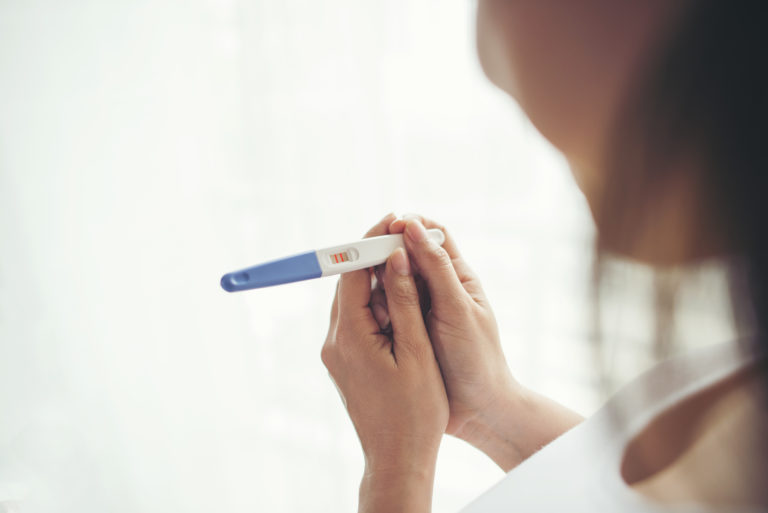As someone who has spent many years working in medical research and supporting women through their fertility journeys, I know how overwhelming it can feel when you’re trying to understand your cycle and time everything just right. At Plusbaby, we meet so many women who share the same hope-filled concern:
“I wish I could understand my body better so I can increase my chances of getting pregnant.”
This is exactly why we created Plusbaby, a Swiss family company built on both scientific knowledge and real-life patient experience. Every product we develop, and every resource we share, is designed to guide you through these special moments with confidence, clarity, and care.
Ovulation tests are one of the tools I often recommend. They seem simple, but they offer one of the most powerful insights into your fertility window. Understanding what a positive ovulation test really means, and using it correctly can significantly increase your chances of conceiving faster.
In this guide, I will help you understand what a positive test indicates, when to use it, the best time for intercourse, and the small steps that can support your fertility journey.
With care,
Magali — Founder, Plusbaby
What Is a Positive Ovulation Test?
An ovulation test detects the level of luteinizing hormone (LH) in your urine. LH rises sharply right before the ovary releases an egg. This sudden spike, known as the LH surge, is what the test measures.
A positive ovulation test means:
- LH levels are high
- Ovulation is likely within 12–36 hours
- You have entered your most fertile window
To understand this topic in depth, don’t miss our detailed guide: The role of vitamins in women’s fertility.
When Should You Start Using an Ovulation Test?
Starting at the right time ensures you don’t miss your LH surge.
| Cycle Length | Start Testing |
| 24–26 days | Day 8 |
| 27–28 days | Day 10 |
| 29–32 days | Day 12 |
| Irregular | Day 7–8 |
Best Testing Practices
- Test in the afternoon or early evening
- Avoid first morning urine
- Test at the same time daily
What Does a Positive Ovulation Test Actually Mean?
A positive test tells you your LH surge has begun. After this:
- Ovulation usually happens → 12–36 hours later
- The egg survives → 12–24 hours
- Sperm survives → 3–5 days
This creates a window where timing intercourse correctly increases your chances of pregnancy.
Best Time for Intercourse After a Positive Ovulation Test
The most effective way to naturally increase your chances of getting pregnant is to plan intercourse around your ovulation window. You can do this by tracking your cycle with ovulation tests and aiming to have sex in the 24–36 hours leading up to ovulation, the time when your LH levels peak and fertility is at its highest.
Ovulation itself lasts only 12 to 48 hours and happens once per cycle, when your body releases an egg. By timing intercourse during this fertile window, you give sperm the best opportunity to meet the egg, significantly increasing the likelihood of conception.
- Same day as positive test
- 12–24 hours after
- Possible up to 36 hours after
This timing allows sperm to be waiting in the fallopian tubes before the egg arrives.
How to Get Pregnant Quickly: What Are the Solutions?
How a Positive Ovulation Test Helps You Get Pregnant Faster
A positive test improves your chance of conception by:
- pinpointing your exact fertile days
- eliminating reliance on symptoms or apps
- supporting irregular cycles
- reducing stress
- helping you prepare your body during the fertile window
Benefits of Using Ovulation Tests
1. Easy & Fast: Just a few seconds each day.
2. Accurate: More reliable than physical symptoms.
3. Helps Couples Plan Intimacy: Less pressure, more clarity.
4. Works Well With Prenatal Vitamins: Especially +Mum Vegan Prenatal Vitamins for hormonal balance and egg quality.
If you want a detailed understanding of how prenatal vitamins help, make sure to read our article: Prenatal vitamins: Why are they so important, and how can you find the best one for you?
Tips to Increase Pregnancy Chances After a Positive Test
Whether you’re trying to have a baby or not, what you eat has an impact on your life. Food has a major influence on the production of hormones in the body. Eating a healthy diet helps to maintain regular, normal hormone levels and therefore optimise your chances of becoming pregnant.
You should be aware that the use of certain lubricants can have a negative effect on sperm quality.
In order to become pregnant, it is not advisable to use lubricants during sexual relations as this might impact the sperm quality and lower your chances of getting pregnant.
Exercise and avoid alcohol, tobacco, nicotine and coffee.
This will help you to have a regular cycle and optimize your chances of getting pregnant. A regular cycle is easier to track and follow than an irregular one. If you have irregularities in your cycle, it’s essential to go and see a gynaecologist and talk to him or her about it.
- Intercourse during the entire fertile window
- Fertility-friendly diet
- Start prenatal vitamins
- Reduce stress
- Stay hydrated
- Sleep well
- Avoid smoking & excess alcohol
Taking food supplements to help you get pregnant
There are a number of prenatal vitamin supplements you can take that have been shown to increase your chances of getting pregnant.
First of all, folic acid is a supplement found in many prenatal vitamins that increases the chances of conception and reduces the risk of neural tube birth defects.
Apart from supplements, folic acid can be found naturally in foods such as green leafy vegetables, citrus fruits, brown rice and beans. Zinc is another natural supplement found in vegetables and eggs, which both partners can take every day to increase the chances of pregnancy.
Your GP will probably recommend a specific brand of vitamin, but good vitamins generally contain folic acid, calcium, iron, vitamin D and Omega 3, also known as DHA (docosahexaenoic acid).
They are available over the counter and should be taken before and during pregnancy.
Common Mistakes Women Make With Ovulation Tests
- Testing too late
- Drinking too much water
- Testing once a day only
- Misreading faint lines
- Using apps alone
When to See a Doctor
Seek guidance if:
- No positive ovulation test for months
- Extremely irregular cycles
- TTC for 6–12 months without success
- Severe ovulation pain
- Suspected PCOS or thyroid issues
This is our final piece of advice: even if you don’t seem to have any particular problems, it’s best to consult your doctor before you start trying to get pregnant.
This will allow you to check that everything is going well and give you confidence. And above all, don’t forget to communicate.
Talk to your partner and tell them about your desires and fears. Stress is enemy number one when it comes to getting pregnant.
Finally, if getting pregnant takes a little longer than you’d like, don’t feel guilty. In Switzerland, around one in six couples has difficulty conceiving children.
Conclusion
A positive ovulation test is one of the most powerful TTC tools you can use. It helps you understand your cycle, time intercourse correctly, and significantly increases your chances of getting pregnant faster.
At Plusbaby, we are committed to supporting you with natural, science-based products and medically reliable guidance.
You deserve clarity, confidence, and care, and we’re here to support you every step of the way.
FAQs: Positive Ovulation Test & Getting Pregnant Faster
1. How long after a positive ovulation test should I have intercourse?
The best time for intercourse is the same day you get a positive test and again within the next 12–24 hours. Ovulation typically happens 12–36 hours after your LH surge begins.
Having sperm waiting before the egg is released increases your chances of conception.
2. Can I get pregnant if I only have sex after the positive test?
Yes, pregnancy is still very possible.
But the highest success rate happens when intercourse occurs both before and shortly after the positive test. This ensures sperm is already in place when ovulation begins.
3. What if I never get a positive ovulation test?
This may mean:
- You missed your LH surge
- Your cycle is irregular
- You tested too late
- You have hormonal fluctuations
- You have PCOS or thyroid imbalance
If you never get a positive result for 2–3 cycles, it’s a good idea to consult a doctor for hormone testing.
For cycle tracking support, try our Ovulation Calculator.
4. Does a positive ovulation test guarantee ovulation?
Not always. Most women ovulate after a positive test, but conditions like PCOS or stress can cause a temporary LH rise without releasing an egg.
Tracking several cycles helps identify your normal pattern.
5. How accurate are ovulation tests?
Ovulation tests are about 99% accurate in detecting the LH surge. They’re one of the most reliable home fertility tools. Digital tests are the easiest to interpret, while strip tests are more cost-effective.
6. What if I have multiple days of positive ovulation tests?
A two-day surge is normal. But if it lasts 3 or more days, it may indicate:
- PCOS
- Hormonal imbalance
- Perimenopause
- Stress
- Misreading faint lines
If this happens often, tracking alongside cervical mucus or using an ovulation calculator can help.
7. Should I use first-morning urine for ovulation tests?
No. LH usually rises later in the day.
The best time to test is in the afternoon or early evening, and you should limit drinking water to 2 hours before testing for more accurate results.
8. How do prenatal vitamins help with ovulation and getting pregnant?
Prenatal vitamins support:
- hormonal balance
- healthy ovulation
- improved egg quality
- better cycle regularity
They also prepare your body with essential nutrients before pregnancy.
9. Can I get pregnant if the test never turns positive, but my period is regular?
Yes, but it’s less likely.
You might be ovulating at a time you’re not testing, or your LH surge may be short. Testing twice a day can help catch it.
If it continues, consider hormone testing.
10. Do I need to use ovulation tests if I already track my cycle with an app?
Apps can estimate, but ovulation tests give real-time biological data.
Combining both gives you a clearer and more accurate picture of your fertile window.
11. Is it possible to get pregnant without seeing a positive ovulation test?
Yes, if intercourse falls naturally near ovulation.
But without knowing your fertile window, your chances decrease. Ovulation tests significantly increase precision and success rates.
12. What should I do after a positive test to increase my chances of pregnancy?
Try these steps:
- intercourse during the fertile window
- Use prenatal vitamins
- stay hydrated
- Sleep 7–8 hours
- reduce stress
- Maintain a fertility-friendly diet
- avoid smoking and heavy alcohol
These habits support hormone balance and overall fertility.








